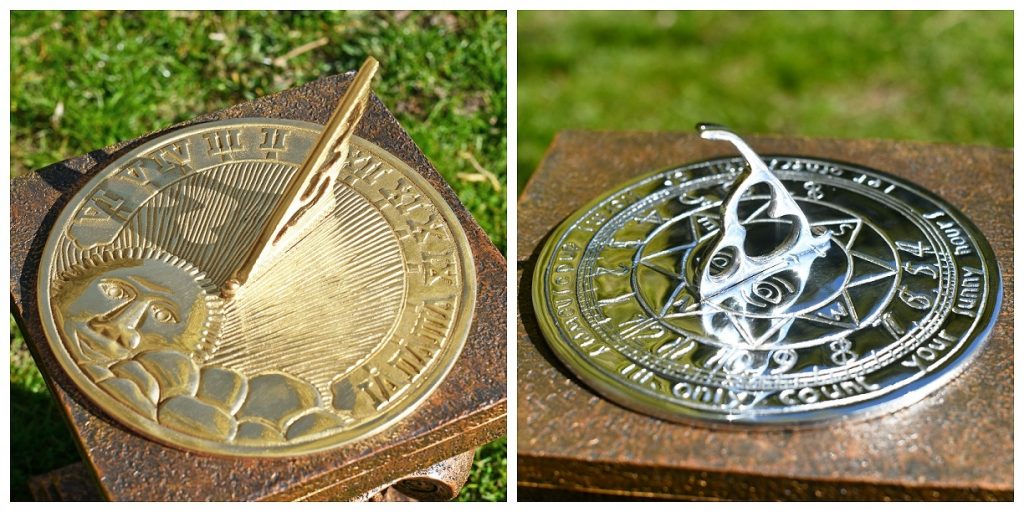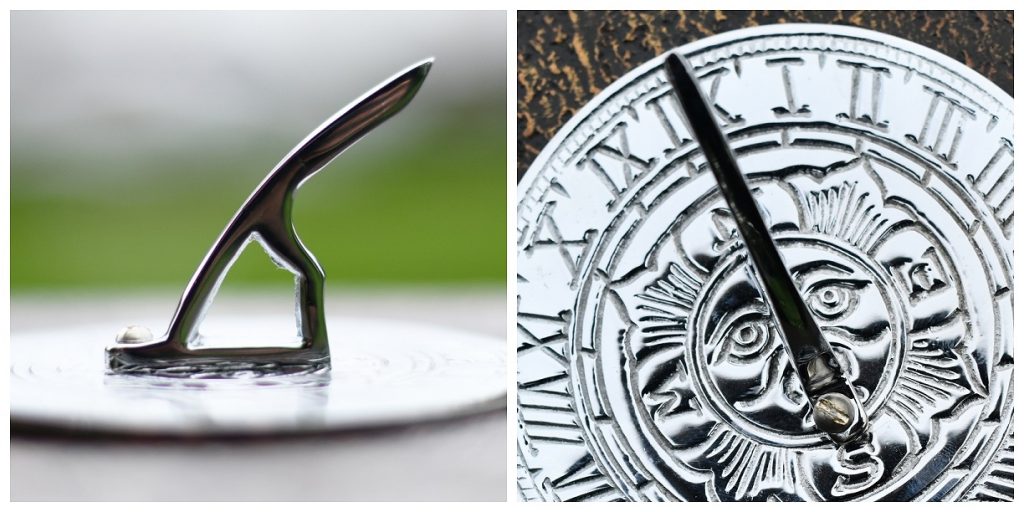 Directions
Directions
Is it free to enter? YES for kids!
Nominal charge for:
OAPs
NHS
Locals (SY Postcodes)
Refugees
Food Bank Users
Armed Forces
Blue Badge Holders
Carers
Facebook Top Fans
£6.00
KIDS ALWAYS FREE!
Routine Adult Peak Season Charge: £8.50
Are you open on a Saturday? YES!
Do you allow dogs? YES!
(All outdoor spaces and outdoor café area)
Something for all the family!
(Please refer to our terms and conditions for more information)

Sundial History
The first sundial dates back to around 1500BC and was used throughout the Egyptian period as a decorative way to tell the time of day. Despite this, it was the ancient Greeks some 3,000 years ago with their advanced technology in iron making and their knowledge of geometry and mathematics that advanced metal sundial designs. The ancient Greeks are responsible for developing many of the principles and forms we recognise in the modern garden sundials of today.
Moreover, the custom of measuring time by shadows persisted from ancient times right through to the invention of the mechanical clock in more industrial times. As such, the sundial is now considered to be the first scientific time-telling instrument, making it possible for us to visualise our four-dimensional world.
As the earth turns on its centre axis from west to east, the sun appears to move across our skies. The shadows that are cast by the sun move in a clockwise direction for objects within the Northern Hemisphere. After this discovery, people were able to make sundials that kept time more accurately and, hence, the angle of the gnomon or indicator was invented to coincide with the tilt of the earth.
Our sundials are second to none when it comes to quality and affordability. We have a vast and varied array of designs for you to choose from with varying sizes to suit every garden style. When looking at the individual pieces, you will see that the detail and craftsmanship is of a truly superior quality. All of our sundials are made from solid brass and are available in a number of finishes, including bright chrome, Verdigris, antique brass and polished brass.

Installation
Goodbye to clock-time and hello to nature-time! The sundial has a long and interesting history of measuring time through the position of the sun in the sky and, although we have now developed many other ways to tell the time, the traditional sundial is still a popular and charming feature in any garden or outdoor space.
The key to deriving maximum pleasure from your new sundial is to begin by selecting a suitably flat surface in a location that is totally exposed to the sun, away from buildings and trees. The longer your sundial is in direct sunlight, the better it will give accurate readings.
The next step involves choosing a pedestal, plinth or column on which your sundial face may be horizontally fixed. We recommend a pedestal equal to your waist height, the top of which must be sufficient in size to accommodate the sundial face of your choosing. Our sundial faces range in size from 120-260mm but please see individual product descriptions for accurate details. Most strong modern adhesives will securely fix the sundial face to the column, available from any good DIY stores or garden centres.
The next step is to calibrate or “time set” your sundial by aligning the gnomon (the sloping shadow-casting object on the dial face) with true north. To find true north we recommend marking a shadow cast using a vertical object at the precise time of local noon. However, be sure to mark your shadow using a true vertical object. A pole aligned vertically, checked by a spirit level, is the surest method of casting a good north-indicating shadow.
Once the sundial face and gnomon angle is aligned with your established true north line, be sure that the pedestal is fixed completely vertical, again using a spirit level. If the base is moved, the sundial will read inaccurately. Periodically check that the base is level and that the time is accurate, particularly in freezing weather. To test time accuracy, check that the gnomon casts no shadow at exactly 12 noon, for at the precise time of noon the sun is directly overhead and true vertical objects will not cast shadows at this time.

Shop the Range